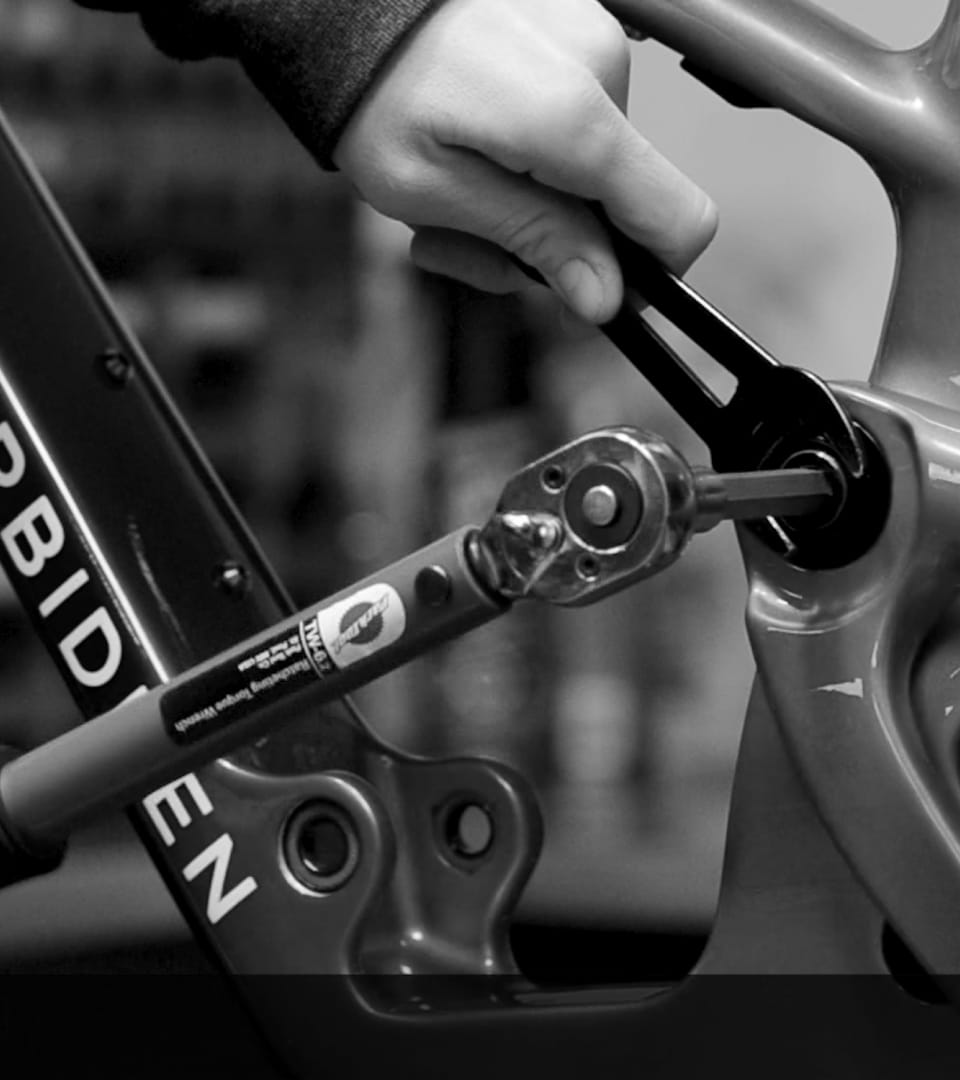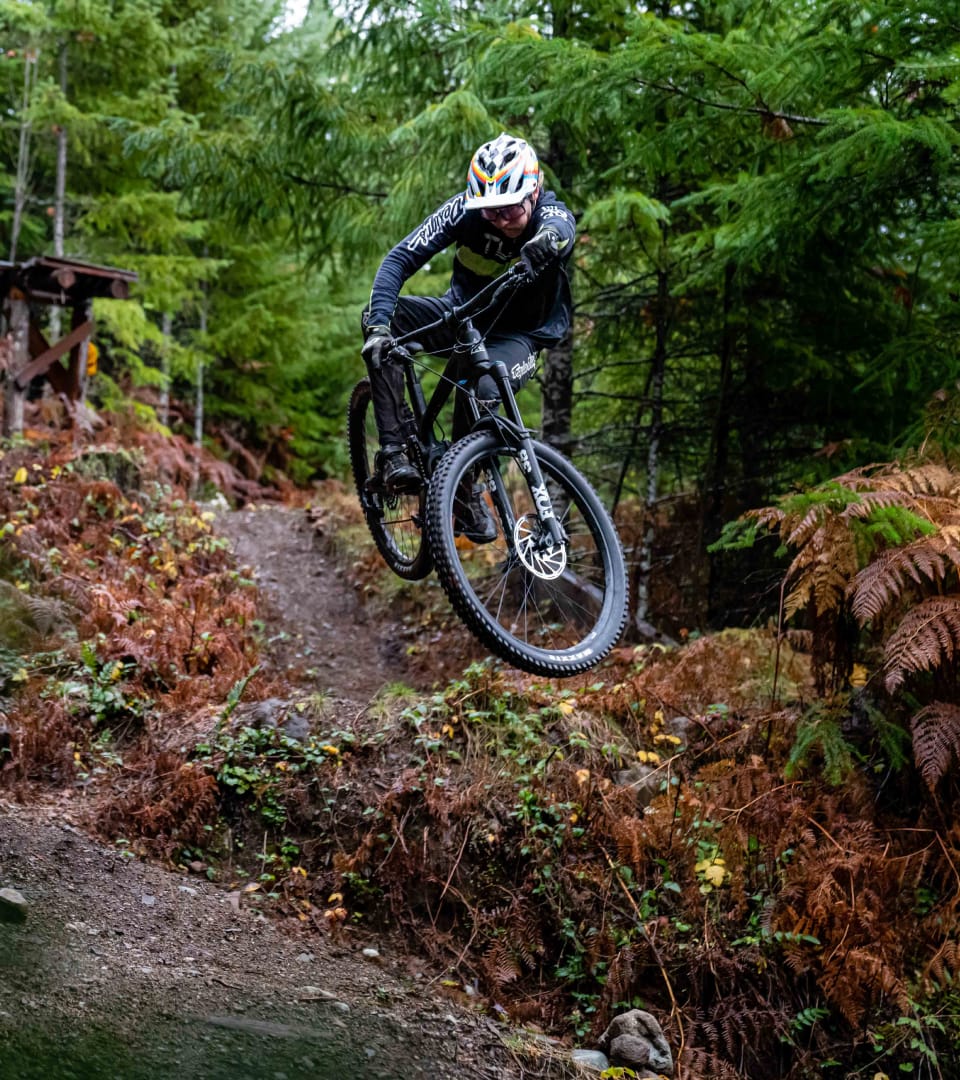

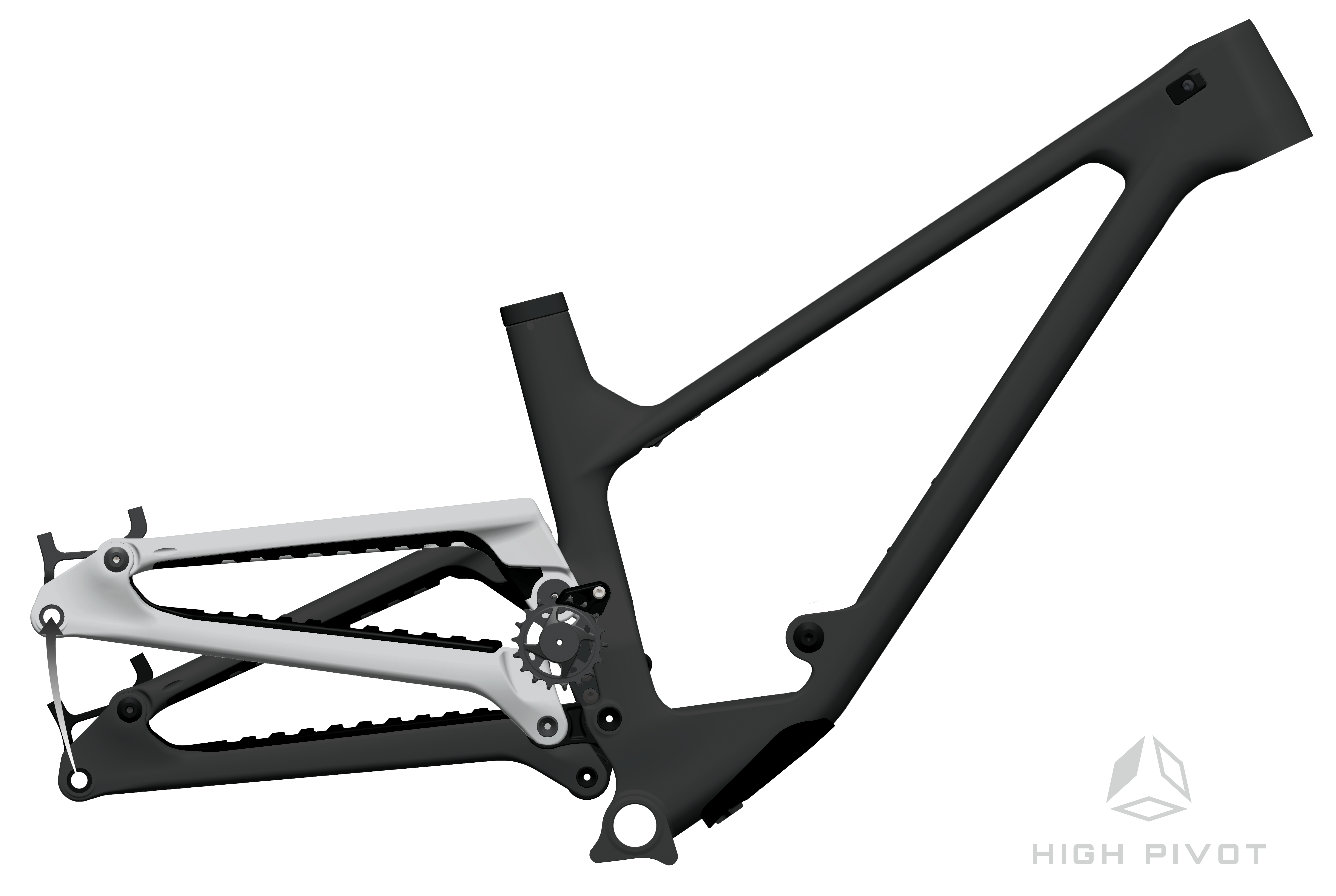
The most obvious feature of our Trifecta suspension system is the high pivot point and the resulting rearward axle path it produces. Unlike some other frame designs that talk of a rearward portion of their axle path, the height of our main pivot within the frame structure means our axle path takes a completely rearward trajectory throughout its travel (fig A). This rearward motion allows the rear wheel to move with, not against, any size of impact. This, in turn, allows the bike to remain composed and maintain momentum through rough terrain.
The lengthening of the rear-center during compression also exhibits the advantageous trait of stabilizing the chassis during bigger impacts and compressions. Imagine a weight bias that is playful when high in the travel, but inherently more composed when you need it the most; that’s what a high pivot can bring to your trail riding experience.
Anti-rise is another term often discussed and regularly misunderstood; it is the term used to describe the effect braking has on the suspension system. Significant anti-rise was once seen as a negative trait. However, as our understanding of chassis dynamics has improved, and more importantly, as our riding styles have evolved, it is now seen as a useful aspect that can be used to further tune the ride handling of the bike. The level of anti-rise in our system (fig B) helps counteract the inevitable fork dive associated with the heavy braking loads often encountered with modern, aggressive trail riding. This result is consistent chassis stability under heavy braking.
The most obvious feature of our Trifecta suspension system is the high pivot point and the resulting rearward axle path it produces. Unlike some other frame designs that talk of a rearward portion of their axle path, the height of our main pivot within the frame structure means our axle path takes a completely rearward trajectory throughout its travel (fig A). This rearward motion allows the rear wheel to move with, not against, any size of impact. This, in turn, allows the bike to remain composed and maintain momentum through rough terrain.
The lengthening of the rear-center during compression also exhibits the advantageous trait of stabilizing the chassis during bigger impacts and compressions. Imagine a weight bias that is playful when high in the travel, but inherently more composed when you need it the most; that’s what a high pivot can bring to your trail riding experience.
Anti-rise is another term often discussed and regularly misunderstood; it is the term used to describe the effect braking has on the suspension system. Significant anti-rise was once seen as a negative trait. However, as our understanding of chassis dynamics has improved, and more importantly, as our riding styles have evolved, it is now seen as a useful aspect that can be used to further tune the ride handling of the bike. The level of anti-rise in our system (fig B) helps counteract the inevitable fork dive associated with the heavy braking loads often encountered with modern, aggressive trail riding. This result is consistent chassis stability under heavy braking.
Fig A.
Fig A.

Fig B.
Fig B.
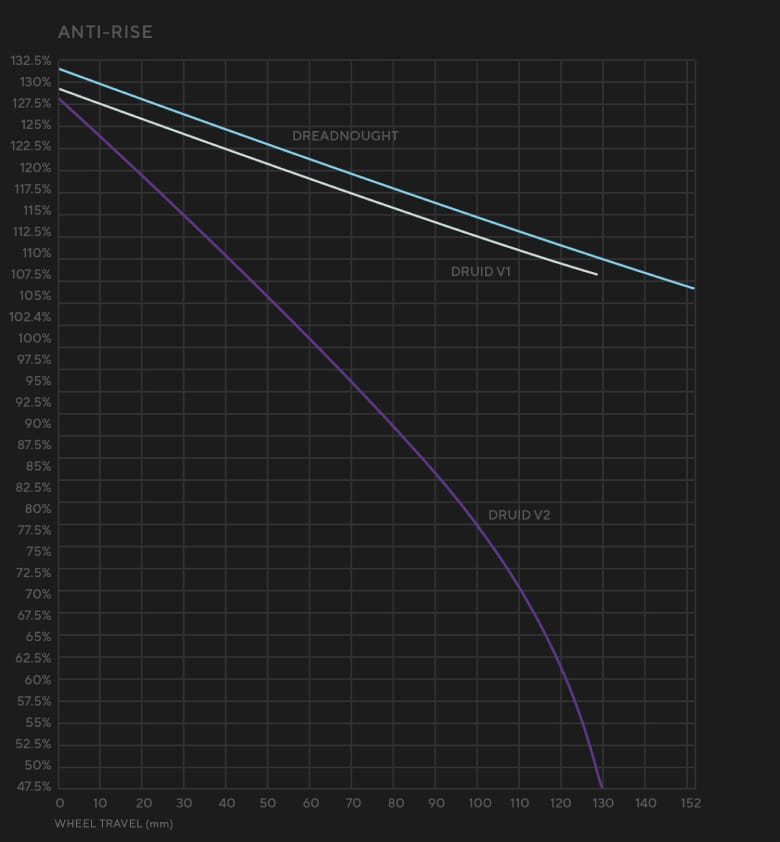
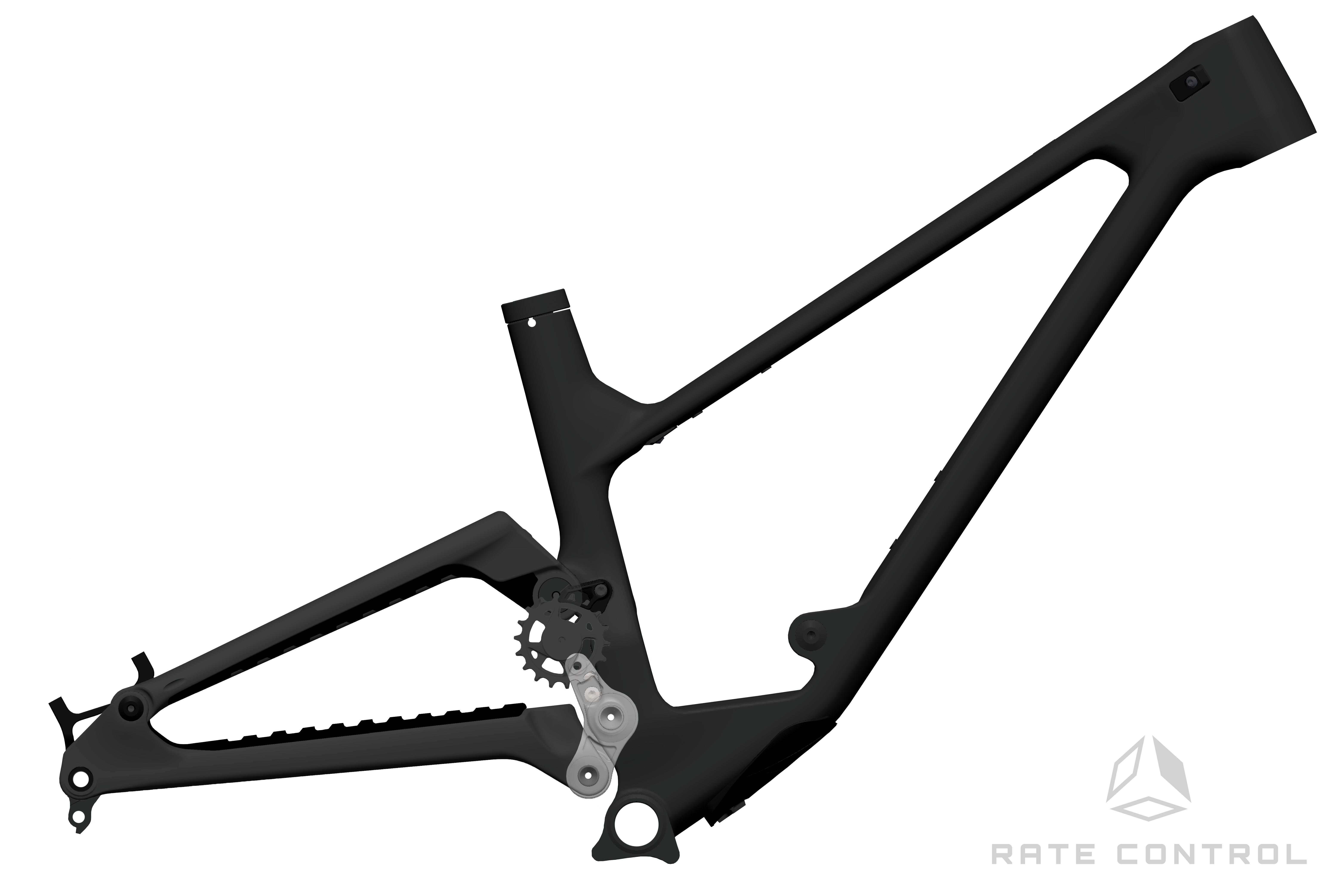
The beating heart of our Trifecta suspension system, the Rate Control Linkage, is used to manipulate the leverage rate as the suspension compresses. In recent times we have seen a somewhat all-encompassing search for more progressivity and an understandable by-product of modern mountain biking. It stands to reason that as trail speeds increase and impacts become greater, the need for more mid-stroke support and end stroke resistance is ever-present.
However, the compromise here is that with too much progression, the suspension system’s ability to absorb impacts can be negatively affected. By employing relatively small links that see a dramatic change in velocity, we can independently tune the critical stages of the shock’s compression (fig C). Supple off the top, our goal for the Druid’s mid-stroke was to provide adequate support, yet remain open enough to absorb repetitive hits with no harshness.
The end-stroke sees a further increase in the rate of change and is all about that bottom-out resistance required to absorb the big hits and landings that come out of nowhere. The final result is a bike that can outperform bikes with significantly more travel, generate grip and pop almost simultaneously while offering an unworldly ability to absorb the big hits. While this might sound boastful, don’t just take our word on this, read the reviews.
The beating heart of our Trifecta suspension system, the Rate Control Linkage, is used to manipulate the leverage rate as the suspension compresses. In recent times we have seen a somewhat all-encompassing search for more progressivity and an understandable by-product of modern mountain biking. It stands to reason that as trail speeds increase and impacts become greater, the need for more mid-stroke support and end stroke resistance is ever-present.
However, the compromise here is that with too much progression, the suspension system’s ability to absorb impacts can be negatively affected. By employing relatively small links that see a dramatic change in velocity, we can independently tune the critical stages of the shock’s compression (fig C). Supple off the top, our goal for the Druid’s mid-stroke was to provide adequate support, yet remain open enough to absorb repetitive hits with no harshness.
The end-stroke sees a further increase in the rate of change and is all about that bottom-out resistance required to absorb the big hits and landings that come out of nowhere. The final result is a bike that can outperform bikes with significantly more travel, generate grip and pop almost simultaneously while offering an unworldly ability to absorb the big hits. While this might sound boastful, don’t just take our word on this, read the reviews.
Fig C.
Fig C.
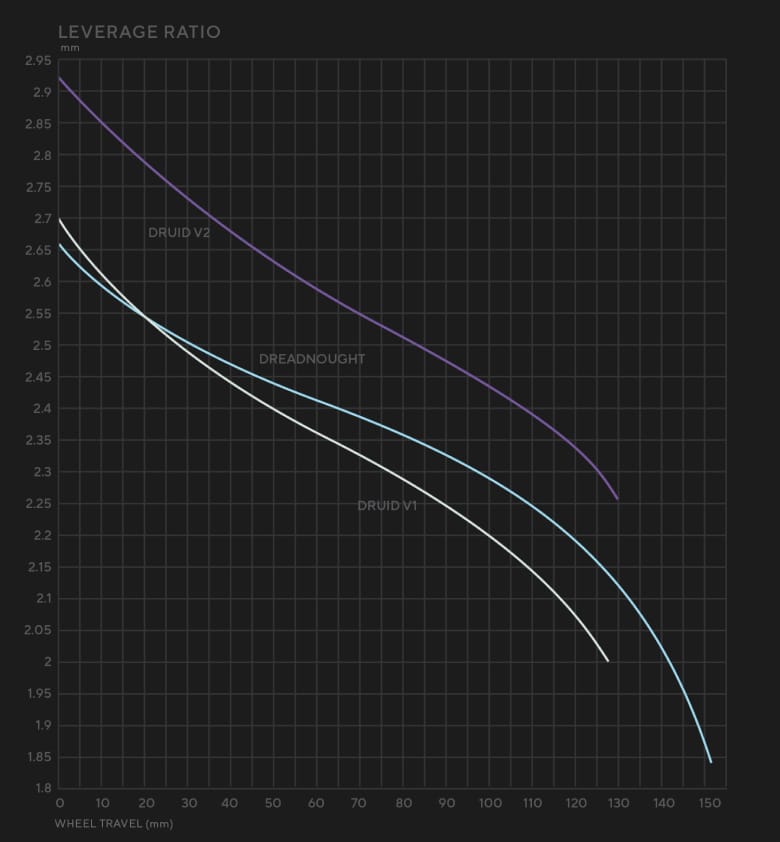
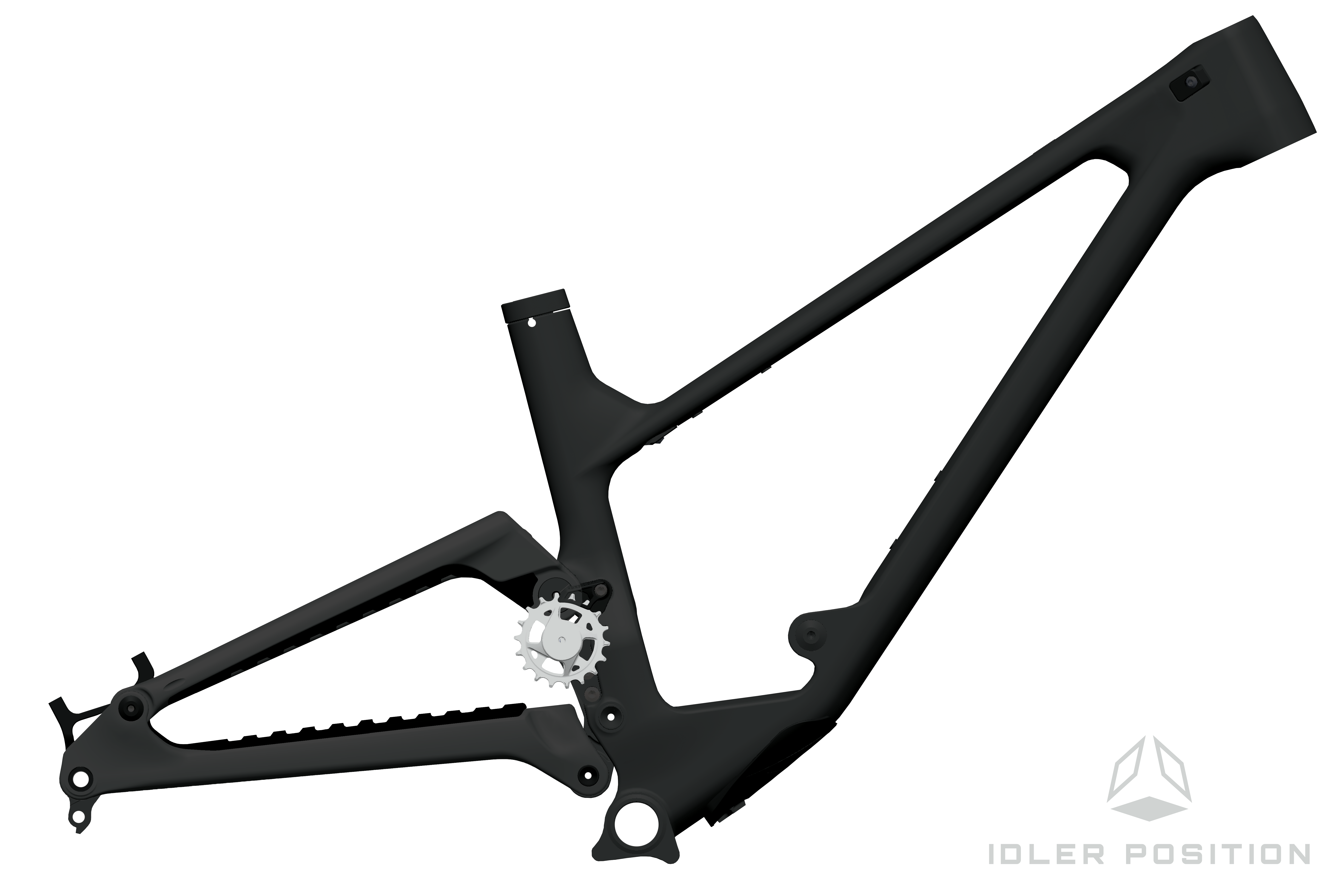
The size and position of our idler pulley is critical, giving our bikes the efficient pedalling ability they’re known for. By carefully positioning the pulley, which is offset from the main pivot, we were able to fine-tune the anti-squat characteristics. Our bikes, therefore, exhibit what we have determined to be the ideal amount of anti-squat at sag to deliver a very stable pedalling response (fig D).
Unlike traditional non-idler equipped designs we can achieve these levels of anti-squat with virtually no pedal kickback (fig E). This is great for flat pedal riders but it also means that the suspension remains fully active during pedalling efforts and in turn affords perfect traction on technical and punchy climbs.
The size and position of our idler pulley is critical, giving our bikes the efficient pedalling ability they’re known for. By carefully positioning the pulley, which is offset from the main pivot, we were able to fine-tune the anti-squat characteristics. Our bikes, therefore, exhibit what we have determined to be the ideal amount of anti-squat at sag to deliver a very stable pedalling response (fig D).
Unlike traditional non-idler equipped designs we can achieve these levels of anti-squat with virtually no pedal kickback (fig E). This is great for flat pedal riders but it also means that the suspension remains fully active during pedalling efforts and in turn affords perfect traction on technical and punchy climbs.
Fig D.
Fig D.
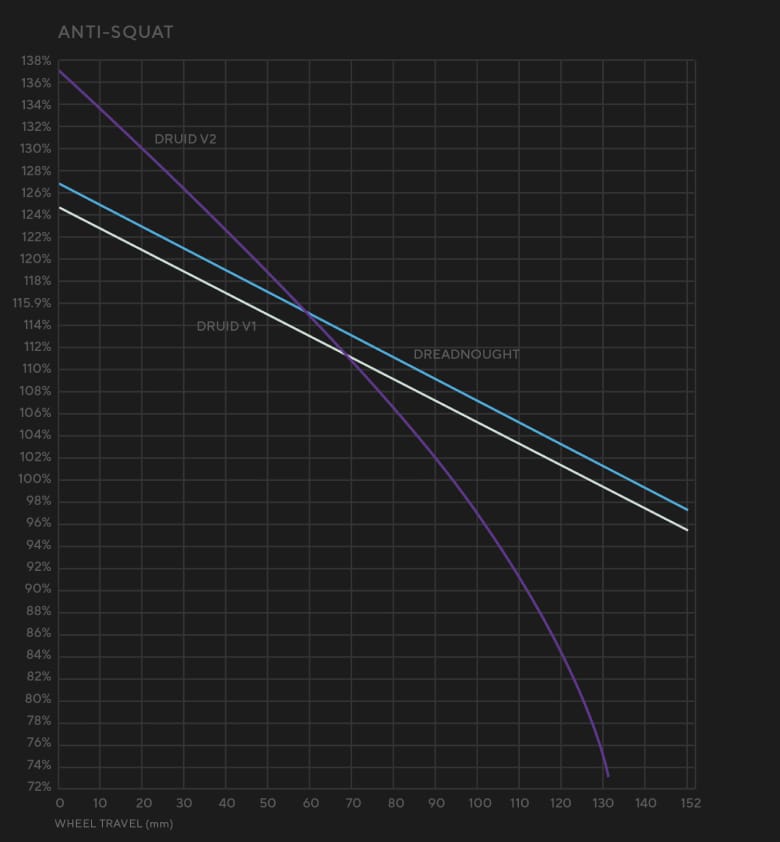
Fig E.
Fig E.
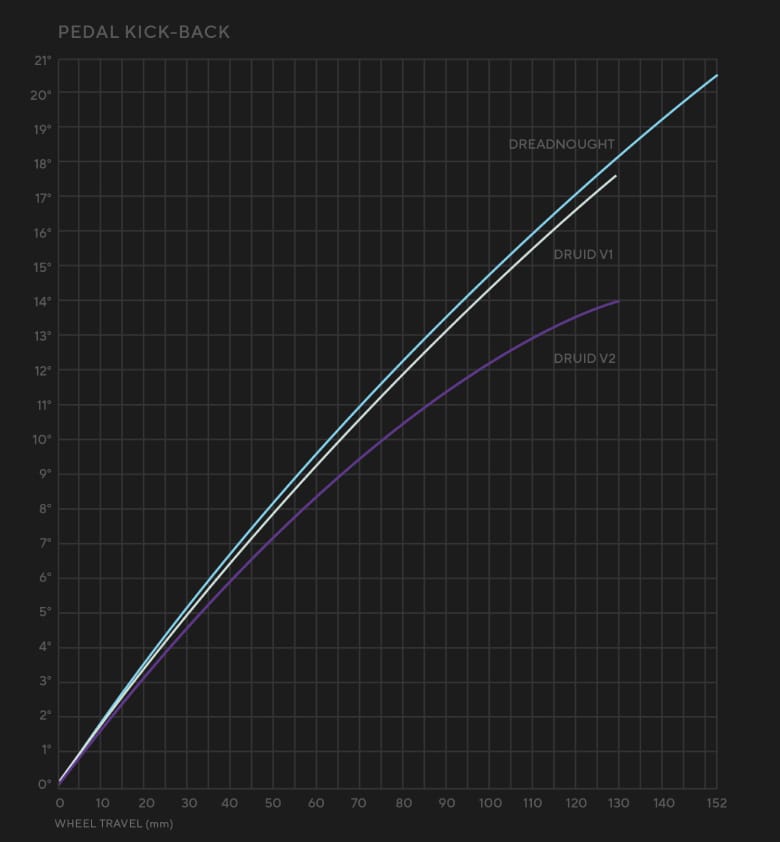


One Ride
One of our core philosophies is that everyone who rides our bikes should experience a similar ride characteristic, regardless of your size or stature. To this end, we have put extra effort into our geometry and sizing and one of the major contributing factors behind a bike’s overall ride feel is its weight balance. The term ‘weight balance’ refers to the relationship between the rear-center and the front-center, and the resultant position of the rider’s center of gravity between the tire contact patches. How each tire is weighted, directly affects the grip characteristics of the bike.
This weight distribution will also have a profound effect on both the [bike’s] agility and its stability. Many brands talk about their bikes having “balanced geometry”, yet they only use a single rear-center (chainstay) measurement across all frame sizes. If the rear-center remains constant with each size while front-center change, then it stands to reason that each size [of bike] will see a different weight distribution and therefore a different ride characteristic. At Forbidden, in an effort to ensure a consistent ride experience across all sizes, we employ a scaled rear-center measurement for each individual frame size.
One Ride
One of our core philosophies is that everyone who rides our bikes should experience a similar ride characteristic, regardless of your size or stature. To this end, we have put extra effort into our geometry and sizing and one of the major contributing factors behind a bike’s overall ride feel is its weight balance. The term ‘weight balance’ refers to the relationship between the rear-center and the front-center, and the resultant position of the rider’s center of gravity between the tire contact patches. How each tire is weighted, directly affects the grip characteristics of the bike.
This weight distribution will also have a profound effect on both the [bike’s] agility and its stability. Many brands talk about their bikes having “balanced geometry”, yet they only use a single rear-center (chainstay) measurement across all frame sizes. If the rear-center remains constant with each size while front-center change, then it stands to reason that each size [of bike] will see a different weight distribution and therefore a different ride characteristic. At Forbidden, in an effort to ensure a consistent ride experience across all sizes, we employ a scaled rear-center measurement for each individual frame size.

Better Fit
Our commitment to geometry and the dynamic ride characteristics of our bikes doesn’t end with scaled rear-center lengths. A challenge for all modern bikes, especially those with 29” wheels, is the relationship between effective and actual seat angle. We are extremely proud of the fact that our actual seat angles change with each size getting progressively steeper as frame size increases, thus, ensuring taller riders have a better-seated position than that of our competitors.
Our commitment to a better fit for all riders also led us to larger than normal increases in head tube lengths that better suit each end of the size range. We feel that these small but extremely important details ensure that you, the rider, will feel instantly at home on our bikes.
Better Fit
Our commitment to geometry and the dynamic ride characteristics of our bikes doesn’t end with scaled rear-center lengths. A challenge for all modern bikes, especially those with 29” wheels, is the relationship between effective and actual seat angle. We are extremely proud of the fact that our actual seat angles change with each size getting progressively steeper as frame size increases, thus, ensuring taller riders have a better-seated position than that of our competitors.
Our commitment to a better fit for all riders also led us to larger than normal increases in head tube lengths that better suit each end of the size range. We feel that these small but extremely important details ensure that you, the rider, will feel instantly at home on our bikes.

